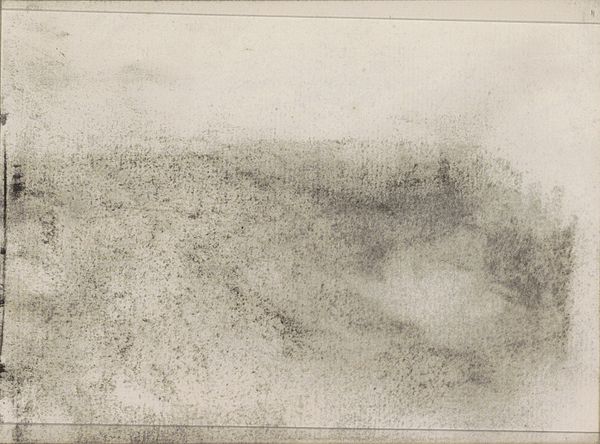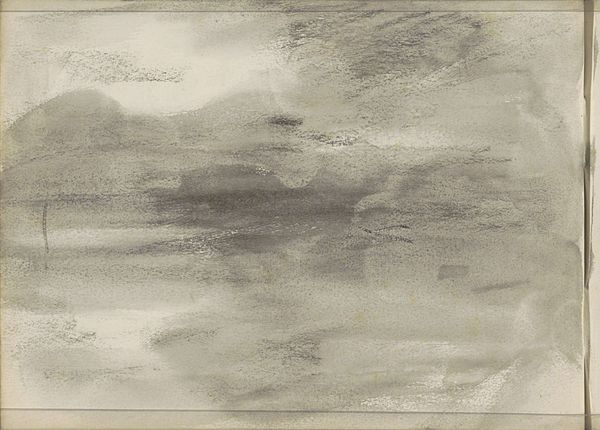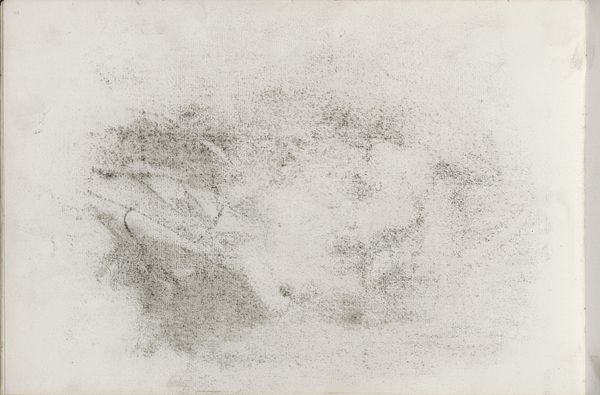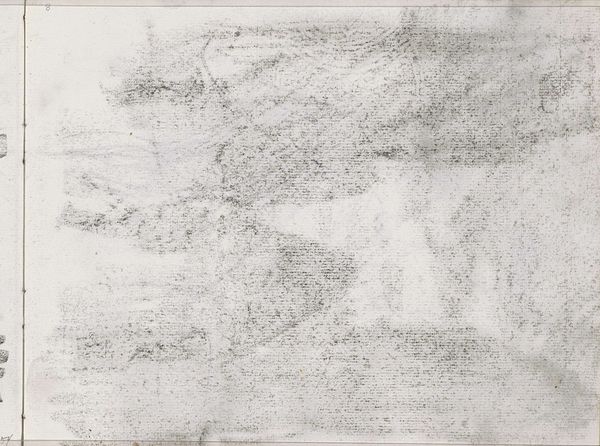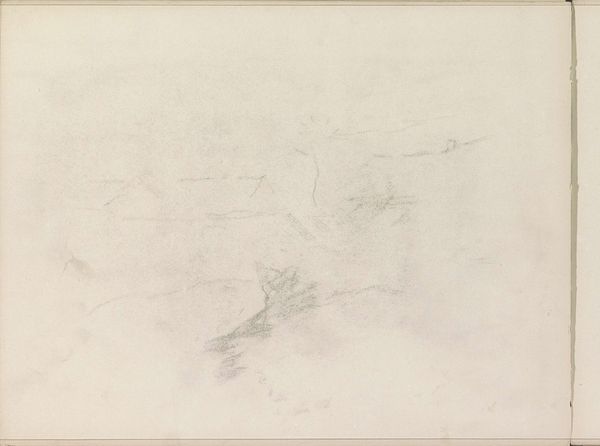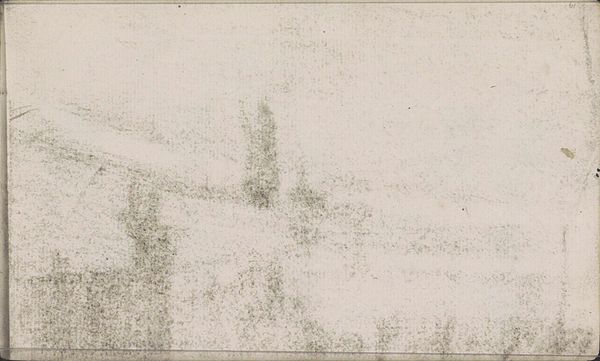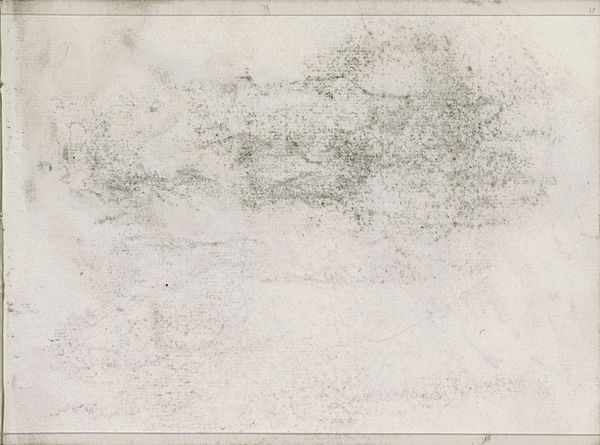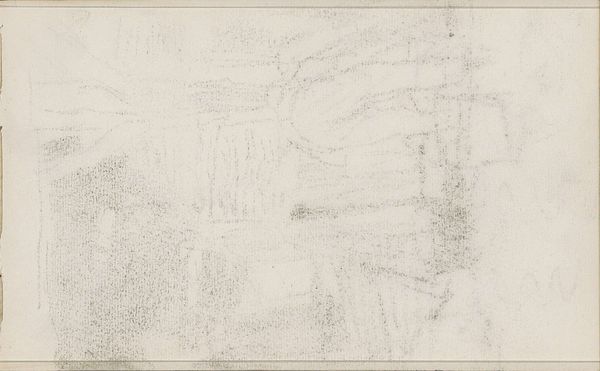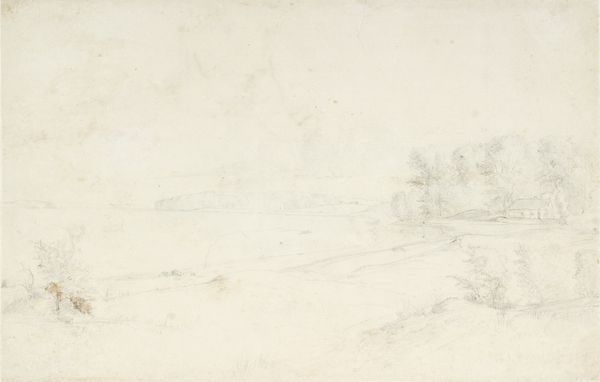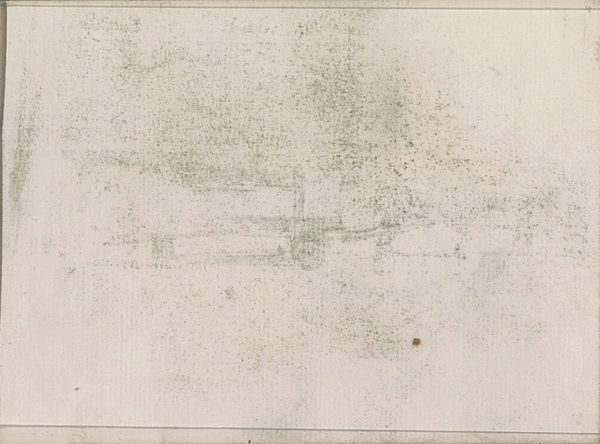
Copyright: Rijks Museum: Open Domain
Curator: Jozef Israëls' "Landschap," dating from 1834-1911 and held here at the Rijksmuseum, is primarily executed in pencil on paper. Editor: My immediate impression is a stark, almost desolate atmosphere, evoked through these muted grey tones and the suggestive marks. It feels incredibly transient. Curator: Transient is a good word. Israëls was known for his somber depictions of peasant life and the Dutch landscape, reflecting the socio-political realities of the time, particularly the plight of the working class and a growing awareness of social inequalities that permeated Dutch society. His art was his form of commentary, a visual response to widespread hardship. Editor: It’s interesting how he uses such simple materials to convey these complex emotions. I mean, we're talking about pencil and paper. Yet, through the pressure and density of the pencil strokes, Israëls creates such depth and mood. Think about the availability of materials during his lifetime, what were his other options? Did the readily availability of more accessible and portable pencils allow him to sketch outside the formal studio setting and more amongst the subjects of his work? Curator: Absolutely. The increasing availability and affordability of drawing materials played a significant role. His use of pencil facilitated capturing the subtle nuances of light and shadow. And while often viewed as preparatory work, this drawing, much like his others, stands on its own, serving as an important document of the artist’s practice and societal observation during a crucial period in Dutch history. The museum's display context underscores the enduring appeal of this drawing for both public engagement and institutional study. Editor: I see it too – the social documentation, not just of the physical world, but of feeling and experiencing a landscape under particular conditions of labor and class. Curator: Indeed. "Landschap" isn't just a drawing; it's a historical artifact, loaded with the anxieties and social conscience of its time. Editor: Well, I see "Landschap" as a perfect testament to how even modest materials in the hands of an insightful artist can spark lasting dialog about material conditions, history, and access.
Comments
No comments
Be the first to comment and join the conversation on the ultimate creative platform.

